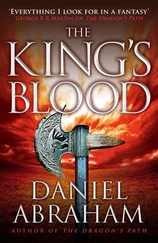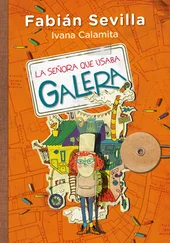She sips her maté and finishes with a slurping sound.
Would you like some maté?
Yes, please.
She fills the gourd with steaming water from a Thermos.
What were you reading on the computer when I came in?
Oh, it was a post in a blog I follow.
What about?
About how people need idols these days and the difference between myth and idolatry.
What’s the difference?
There are actually a thousand definitions of what a myth is, but most of them suggest that a myth contains some sort of truth, no matter how obscure, about the challenges and meanings of life. They are stories that have to do with heroes, people who experience great hardship while striving to achieve an objective. The stories change throughout time, but the patterns stay the same. Their strength is timeless. Idolatry has to do with idols, which are the images or representations of divinities. In idolatry, the idol is worshipped as much as or even more than the divinity itself. In other words, idolatry doesn’t contain an implicit truth, like a myth, but rather a lie or a falsification. So this guy is saying that idol worship in our generation is really common, but few people value and recognize myths. He says the traditional idea of myth is in decline because of the speed of social transformation, information overload, unchecked individualism, and so on. We’re living through a historical moment of transition from myths to idols. Something like that. Anyway, I haven’t finished, but it’s an interesting read.
Very interesting.
Do you want a ticket?
Yes.
She takes down his name and phone number in a lined notebook. A protruding vein runs from the back of her hand almost as far up as her elbow. Her fingers look rough. Angular handwriting. Left-handed. Well-kept fingernails but no nail polish. He finishes the maté.
Would you like another one?
Her bottom lip is a little lighter in color than her top lip. The color of raw flesh.
No thanks. Do I have to bring anything?
Sunscreen. Camera. We provide water. But you need to pay up front.
Oh. I haven’t got any money on me.
She checks her watch.
I close in fifteen minutes. Look, let’s do this: come a little earlier tomorrow and bring the money. We won’t tell anyone else. Are you from here?
I’m from Porto Alegre, but I live here now. Right behind here, in one of the apartments overlooking Baú Rock. Next to the house with the deck.
Wow! A five-star view. What do you do?
I’m a sports instructor: triathlon, swimming, running. That sort of thing.
Cool.
A car pulls up in front of the travel agency. All four doors open at the same time, and an entire family starts piling out. A potbellied man, who must be the father, enters the agency, murmurs a greeting, and stands there waiting to be served. A woman, who must be the mother, stays outside dealing with the hyperactivity of three girls.
He thanks Jasmim, says good-bye, and goes home with his heart thumping. He tries to think about something else but can’t. Women with flowers for names and curly hair. Myths contain truths of some sort. Something vulnerable in those big eyes staring at the screen. Patterns of stories that persist throughout time. He can no longer remember her face, but he knows he’ll find her beautiful again tomorrow. He remembers her shoulders held back, the way her waist and hips fit together, her straight posture in the chair. He’s never seen anyone sit so beautifully before. He is in love with her posture. She is too highly educated to put up with him for any length of time. It would be better to not even start. He gets the hundred reais from the kitchen drawer regardless and heads back to the agency, but when he gets there, it is already closed.
• • •
B ack in the days of the São Joaquim de Garopaba Whaling Station, right whales were towed here and cut up at the edge of the beach. The blubber was melted down in furnaces in Imbituba to extract the oil that was used in oil lamps and to give consistency to the mortar used in construction. The parish church, over there on the old square, was built with mortar made from whale oil mixed with sand and ground shells. Their bones were used to make corsets. They were butchered right there in front of Baú Rock, every one, and the entrails left floating in the water were devoured by sharks.
Your apartment overlooks a whale cemetery, says Jasmim.
He turns to look at the bay that is growing distant and imagines the calm waters crimson with blood and the sky black with a swirl of vultures and seagulls. The boat moves slowly so that Toni, the thin biologist who is their guide, can finish his initial explanation.
In the past, people hunted with iron harpoons. Sometimes a whale could drag a launch for hours until it grew tired, and then the whalers would move in for the kill. Then they started using dynamite with the harpoons.
A young man in sunglasses with a Rio accent laughs. Jesus, did they blow up the whales? Literally?
They didn’t explode them completely. The dynamite wounded them.
They used to harpoon the calves to attract the mothers, Jasmim whispers in his ear. But Toni never says this. You know, family-friendly tourism.
The slaughter took place once or twice a year during the whaling season. The animals come here seeking warmer water in the winter. We might think this water is cold, but for the whales, who live in polar waters, it’s warm. The mothers come to give birth to their calves, and these beaches are like maternity wards, where they can nurse and protect their young.
Toni pauses.
The butchering of a whale could last for several days, and a strong smell would settle over the town.
It stank, says the pilot of the boat, an elderly man with a nervous tic in his eye and a kind of kepi on his head. It wasn’t easy to live with.
Elias, our pilot, was a whale hunter, says Toni. He caught the last whale on this coast, didn’t you, Elias? In Imbituba, wasn’t it?
Yep. In ’seventy-three. I caught the biggest one too. Seventy-five feet.
The boat rounds Vigia Point, and the waves start getting bigger. Excited by the view and the stories about exploding harpoons and giant whales, the tourists start talking loudly, filming and taking photographs. All the male tourists except him are holding still or video cameras. Most of the women and children are also pointing cameras and cell phones in all directions. The wind is cold, the sky is completely blue, and the nine o’clock sun is already stinging his neck. He feels the sweat trickling down his stomach and takes off the waterproof jacket provided by the agency as protection from the salt water that splashes up inside the boat. Jasmim is wearing the yellow jacket and a sarong — patterned with the famous multicolored ribbons from the church of Nosso Senhor do Bonfim in Salvador — is tied at her waist. The jacket is open a little, revealing a white bikini top with pink flowers. She has perfect white teeth and an auricle piercing in her left ear. She is covered in goose bumps.
Okay, everyone. Attention please. Continuing on: the Garopaba Whaling Station was founded in 1795 and was one of many along the coast of Santa Catarina State. Armação Beach, in Florianópolis, for example, also had one. When they realized how lucrative it was, the Portuguese Royal Treasury took over the running of the stations between 1801 and 1816, but they didn’t know how to manage them, and they ended up being leased again to private citizens. It was the main economic activity in the region. Our historical center was built to serve the whaling industry. Everything was there: the shore factory, the residences of the administration and workers, the warehouses. Some thirty African slaves worked in the Garopaba Whaling Station.
Читать дальше












